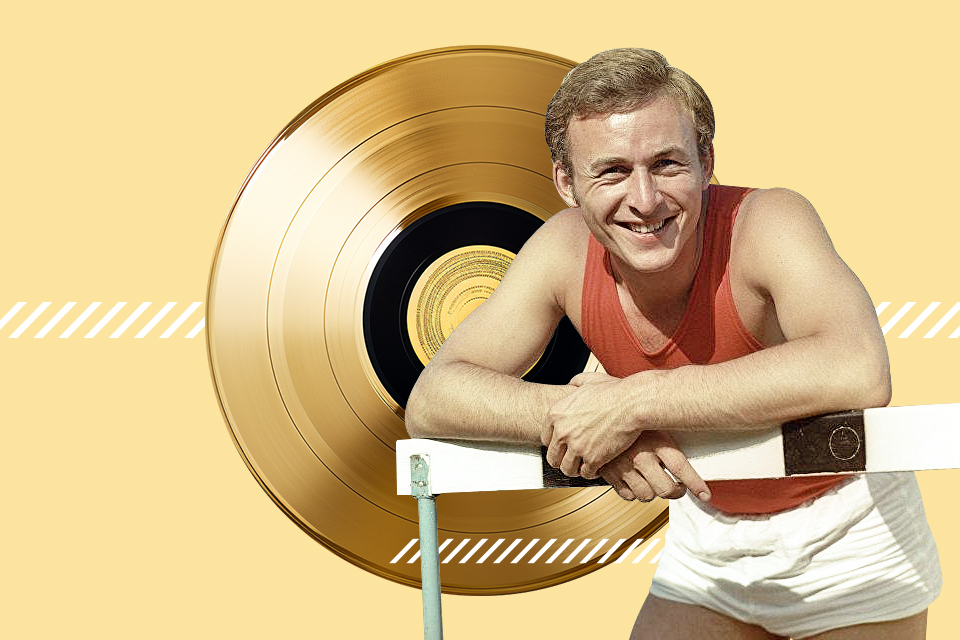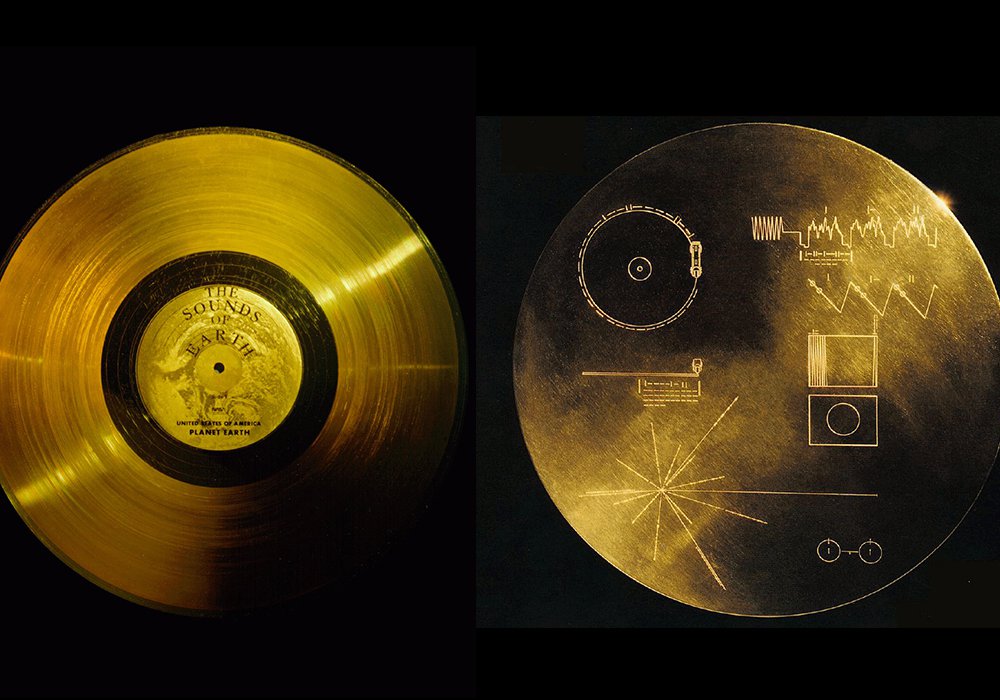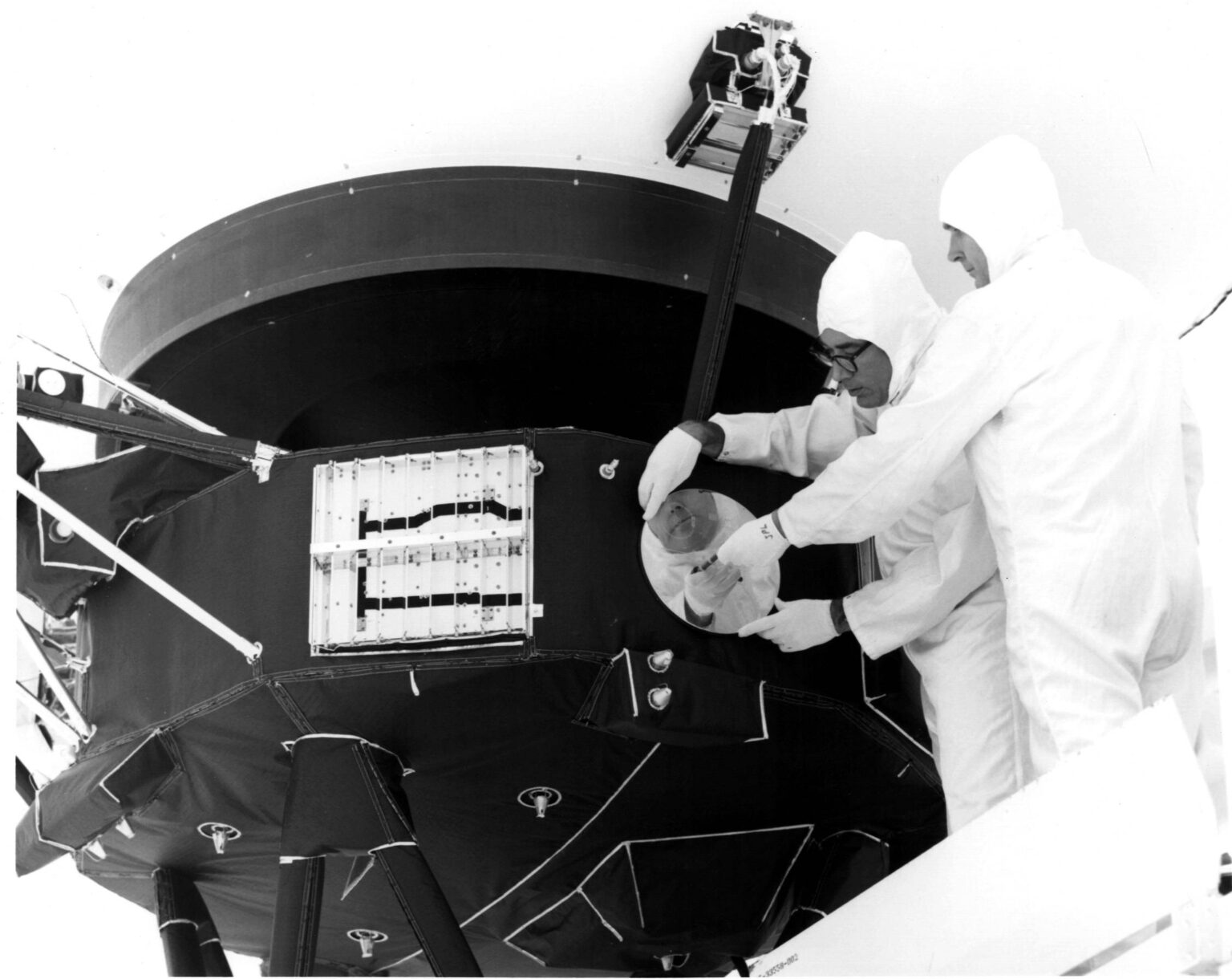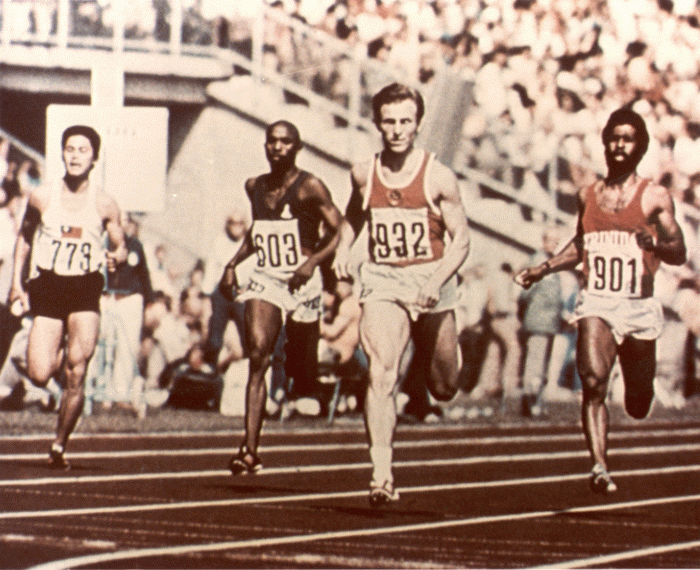Today, we celebrate the 46th anniversary of the launch of Voyager-1. It has gone down in history as the first and fastest spacecraft to enter interstellar space, as well as the most distant human-made object from Earth. Voyager-1 has already ventured over 24 billion kilometers away from our planet. Currently, it takes nearly 22.5 hours for a signal sent from Earth to reach the spacecraft.

Voyager1, along with its twin Voyager-2, isn’t heading to the stars empty-handed. In case representatives of any extraterrestrial civilization encounter them in the distant future, our spacecraft carry a message on board. However, few know that a famous native of Ukraine is a part of this message.
The Message for Extraterrestrials
The Voyager message is a recording made in phonographic style on a gold-plated copper disc. It is enclosed within a protective case attached to the body of each spacecraft. The case bears an engraved diagram depicting how to play the message, a method for translating signals into images, a diagram of hydrogen atom emission (used for units of measurement in the message), and a pulsar map to identify the location of the Sun in the Milky Way.

A special committee led by the renowned Carl Sagan was responsible for selecting the content of the disc. Their primary goal was to showcase the Earth and its inhabitants to the Universe.
So, what made it onto the disc? A significant portion of the message comprises music. The authors of the message believed that music could convey our aesthetics, philosophy, and emotions to extraterrestrials. Voyager’s message includes both classical Western and Asian music, as well as compositions from other corners of the Earth. The disc also contains greetings in 55 languages (including Ukrainian), addresses from the President of the United States and the UN Secretary-General, a selection of sounds from our planet, and even recordings of brainwaves.

But perhaps the most famous part of the Voyager message is the collection of 116 images meant to provide extraterrestrials with a basic understanding of the Solar System, Earth, humans, our culture, and technology. And on these images, currently hurtling through space, you can find a well-known Ukrainian.
The Fastest Human on Earth on the Fastest Spacecraft
The reason is that one of the images on the Voyager record features Valeriy Borzov, a native of Ukraine, who held the top spot in the 200-meter sprint. The photograph was taken during the 1972 Munich Olympics, where he won two gold medals and one silver. Following this triumph, Borzov earned the title of the fastest man in the world and became known as the “Rocket Man.” Therefore, it is symbolically fitting that his image made its way onto the fastest spacecraft in history.

Commemorating the anniversary of the Voyager spacecraft’s launch, The Universe Space Tech reached out to Valeriy Borzov for a comment on this famous image.
— Dear Valeriy Pylypovych, a photo of your Olympic sprint is recorded on the Voyager spacecraft’s record meant for extraterrestrial civilizations, which is onboard the famous Voyager probes. When did you first learn about this?
— I found out about it accidentally through the mass media. When the spacecraft were launched in the 1970s, I wasn’t aware of it. The information reached me a bit later through foreign press.
— Did NASA or any official authorities contact you regarding the photo?
— No, there was no contact with me. They made that decision themselves.
— The primary purpose of the Voyager message is to show what our planet was like and convey its image. You are the only Ukrainian entrusted with representing Earth. What are your thoughts on this?
— I don’t think NASA considered my nationality. I suspect this decision was made due to the impression of my victory. This event was very resonant, and that might have influenced NASA’s decision. The photo features representatives from different countries, including me. I want to say that having this photo sent is a great honor because it permanently records the achievements of Ukrainian athletes for many years. At the time, it was the Soviet Union, but they even clarified that I was from Kyiv.
The Voyager probes have achieved sufficient speed to leave the Solar System forever. In about 40,000 years, Voyager–1 will approach within 1.6 light-years of the star Gliese 445. Approximately 260,000 years later, it will pass within one light-year of the red dwarf TYC 3135-52-1. As for Voyager–2, in 42,000 years, it will come within 1.7 light-years of the red dwarf Ross 248.
Currently, it’s impossible to predict whether any civilization will intercept the Voyager probes and read their messages, or if the artifacts will continue their endless journey through the Milky Way without being detected by any sentient beings.
Additional Information
Valeriy Borzov was born on October 20, 1949, in the city of Sambir in the Lviv region of Ukraine. He participated in the 1972 and 1976 Summer Olympics, winning two gold, one silver, and two bronze medals. Borzov also boasts four European Championship titles and seven European Indoor Championship titles. From 1990 to 1998, he served as the President of the National Olympic Committee of Ukraine and was the President of the Athletics Federation of Ukraine from 1996 to 2012. Since 1994, he has been a member of the International Olympic Committee.

